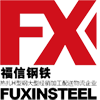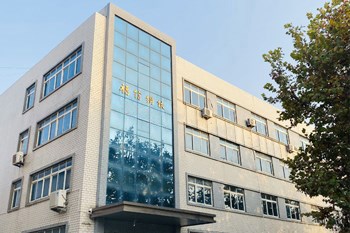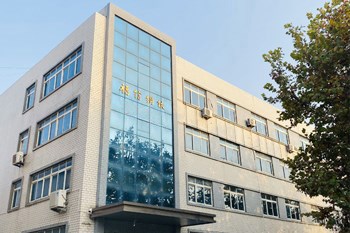
-
走进福信
- 新闻中心
新闻中心福信钢铁是热轧H型钢经销加工配送大型物流企业,是马钢H型钢山东地区代理商,是莱钢H型钢经销商,是日钢经销商,是鞍山宝得钢厂经销商,福信人经过二十年的艰苦奋斗和辛勤耕耘 ,用户遍布石化、化工、炼油、钢铁、船舶制造等领域。
- 产品展示
- 人力资源
- 在线留言
在线留言- 联系我们
- Home
Home- About Us
About UsFuxin Iron and Steel Co., Ltd. was established in 1993. The head office is located in the scenic coastal city of Yantai Development Zone.
- News
NewsAfter 20 years of hard work and hard work, Fuxin Steel has customers in petrochemical, chemical, oil refining, steel, shipbuilding and other fields.
- Products
ProductsThe company has become a qualified supplier in the e-commerce network of Sinopec and PetroChina, a quality credit AAA enterprise, and has passed the quality management system certification required by the ISO9000 standard.
- Jobs
- Messages
Messages- Contact us
Contact usChina-Korea Free Trade Zone is good for textile and steel industriesRelease time:2015-06-03 22:09|Reading volume:The spokesperson of the Ministry of Commerce Shen Danyang stated at a regular press conference of the Ministry of Commerce on the 2nd that the China-South Korea Free Trade Agreement is a new driving force for the economic growth of the two countries. Both governments of China and South Korea believe that after the implementation of the China-South Korea Free Trade Agreement, the two countries will continue to deepen practical cooperation in various fields, and the bilateral economy and trade will be highly complementary and integrated, thus injecting continuous impetus into the economic growth of the two countries. According to calculations by the Development Research Center of the State Council, the China-South Korea Free Trade Agreement will boost China's real GDP growth by 0.34 percentage points and South Korea's real GDP growth by 0.97 percentage points.
Shen Danyang also said that the China-South Korea Free Trade Agreement is a great thing that benefits the businesses and people of the two countries. Specifically: On the one hand, the companies of the two countries will have greater development opportunities. For example, in terms of trade in goods, China will eventually remove tariffs on 91% of its products from South Korea, covering 85% of imports from South Korea.
At the same time, Korea will eventually remove tariffs on 92% of its products from China, covering 91% of imports from China. China's textile and apparel, non-ferrous metals, steel, machinery and equipment industries can further reduce the cost of exports to South Korea and increase their market share in South Korea. South Korean machinery and equipment, chemicals, liquid crystal display and other industries will also better share China's vast business opportunities.
On the other hand, for Chinese consumers, some popular products such as home appliances, household chemicals, Korean specialty foods, clothing, shoes and hats that go to Korea for travel and shopping or Korean purchases will be cheaper. For example, refrigerators, electric rice cookers, electric frying pans, electric ovens, induction cookers, microwave ovens, and some massage equipment, beauty equipment, etc. will cancel the current 15% tariff within 10 years. Tariffs on many clothing, footwear and hat products will be reduced from the current level of about 15% to zero within 10 to 20 years. For South Korean consumers, they will also buy agricultural and fishery products, clothing and footwear, home appliances and other products from China at more favorable prices.
The China-South Korea Free Trade Agreement is also a booster for economic integration in the Asia-Pacific region. Shen Danyang said that China and South Korea are important economies in the Asia-Pacific region. The total economic volume of the two countries accounts for 25% of the total APEC membership, and the trade in goods accounts for 29% of the total trade of the members. The establishment of a high-level free trade zone between the two countries has a clear vane significance for advancing the process of economic integration in the Asia-Pacific region. In addition, the China-South Korea Free Trade Agreement includes "new issues in the 21st century" such as e-commerce, competition policy, and the environment, and for the first time introduced local economic cooperation. The two countries will also conduct the second phase of service trade and investment negotiations within two years after the agreement takes effect, using the pre-access national treatment and negative list model. On the premise of a general balance of interests, the two parties have reached an institutional arrangement to further strengthen cooperation and regulatory integration, which will produce a wide range of demonstration effects for the integration of rules in the Asia-Pacific region.
Related news: Steel industry under anti-dumping investigation, Ministry of Commerce encouraged to respond
Following the EU's anti-dumping investigation on cold rolled steel coils in early May, some countries or regions such as the United States, Canada, Mexico, Brazil, and Turkey have also initiated or planned to initiate anti-dumping investigations against Chinese steel exports. What is the view of the Ministry of Commerce on this?
Shen Danyang responded: Since the beginning of this year, my country's steel products have encountered many trade remedy investigations, including those from Europe, America, and Asia, Africa and Latin America.
The Chinese government has always advocated that WTO members should strictly abide by WTO rules and use trade remedy measures prudently. The way to effectively solve the steel trade problem is to promote countries to carry out inter-industry capacity cooperation, through dialogue and communication to resolve trade frictions, and achieve a win-win situation. Therefore, on the one hand, we encourage the Chinese steel industry and the companies involved in the case to actively participate in the response and safeguard legitimate interests in accordance with WTO rules. On the other hand, the Ministry of Commerce will continue to promote the two governments and the industry to properly handle trade disputes through dialogue and consultation.
Recent anti-dumping investigations against China's steel industry
On May 29, 2015, the Trade Commission under the Ministry of Trade and Industry of Korea issued a ruling, imposing punitive tariffs ranging from 28.23% to 32.72% on H-beam steel made in China for a period of 5 years.
On May 28, 2015, Australia announced an anti-dumping investigation against hot-rolled steel sheets originating in China, Indonesia, Japan and South Korea.
On May 14, 2015, at the request of the European Union of Iron and Steel Industries, the European Union initiated an anti-dumping investigation on cold-rolled steel plates originating in China and Russia.
On May 13, 2015, the EU made a preliminary anti-dumping ruling on grain-oriented silicon electrical steel originating in China, Japan, South Korea, Russia and the United States, and imposed a 28.7% temporary anti-dumping duty on grain-oriented silicon electrical steel made in China for a period of time. For 6 months.
On April 21, 2015, the Dumping and Subsidy Inspection Commission of the National Bureau of Competition and Intellectual Property Protection of Peru announced the implementation of three-year anti-dumping measures on three types of hot-rolled steel pipe products made in China, with tax rates ranging from 60.7% to 89.8%.
(Source: My Steel Net)
PreviousNext
- Add:90 Huangshan Road, Yantai Development Zone
- Tel:0535-6370829
- Fax:0535-6396529

Follow mobile station
COPYRIGHT 2020 Yantai Fuxin Steel Co., Ltd. All rights reserved - 新闻中心












